‘Nature Smart’ and inspirational

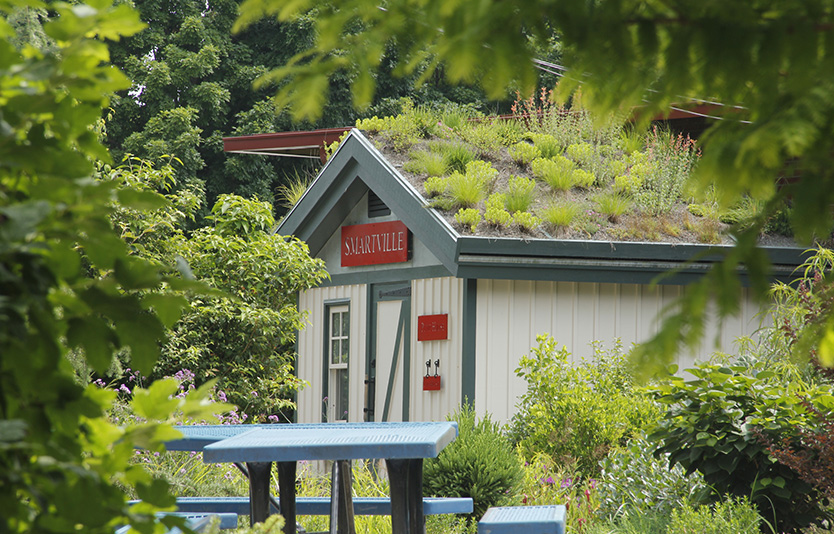
Smartville Garden is an outdoor classroom at a public elementary school where students, staff, parents and the community can experience the proven effects of nature on educational aptitude, health and wellbeing.
Plant taxonomy and classification, water conservation, environmental awareness, nature science, and biology are taught via an instruction model that includes cross-connecting science, technology, engineering and mathematics. There are open areas for lectures, quiet places for counseling, and pathways throughout that allow para-professionals to escort entire grade levels of children from the building to the playground, and parents, staff and visitors to crisscross the campus during any day.
The pump house with a green roof pictured above can be seen from the street and is a visible statement of the theme of the garden. The garden shed pump house stores all the tools needed for student and community participation in planting and tending the garden.
The garden is a beautiful, interesting and inspirational resource that supports the elementary school’s unique ‘Nature Smart’ curriculum. All aspects of constructing the garden- design, installation, and maintenance- continue the school’s tradition of encouraging and incorporating community involvement in the school.
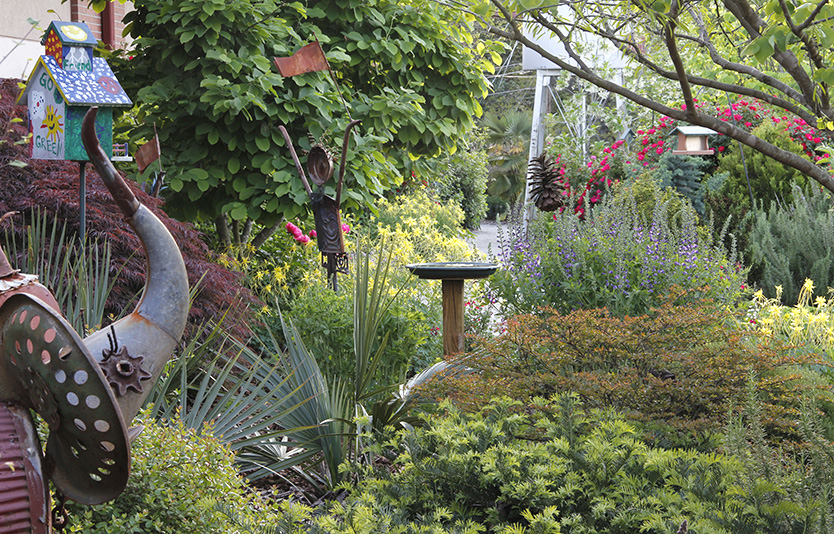
At the main entrance, a glimpse of the pathway and its colorful plantings on either side lead the eye into the distance and entice visitors. The canopy of flowering trees, feeders, birdbaths, birdhouses and luxuriant plantings attract birds and pollinators. Smartville Garden is a wildlife habitat with plants for food and nesting.
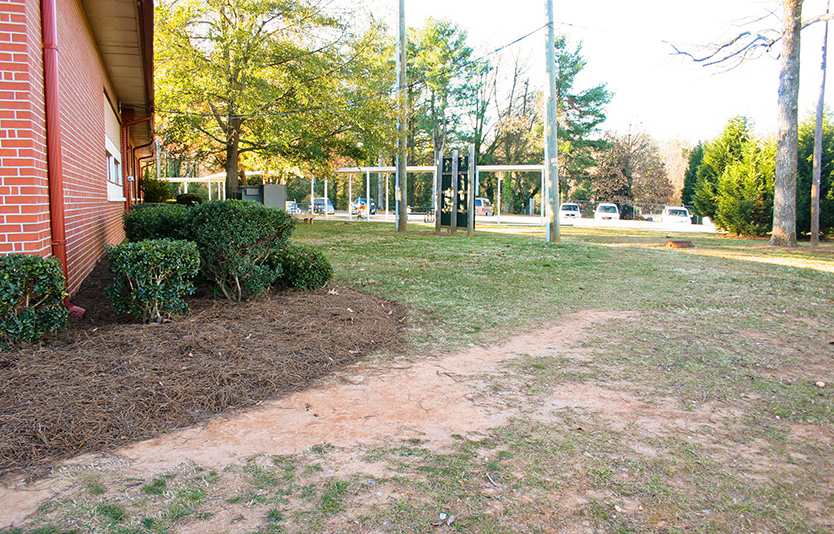
BEFORE: The fifty-year-old school campus had only enough soil to support weedy grass and a few trees. Erosion left large areas of dirt exposed.
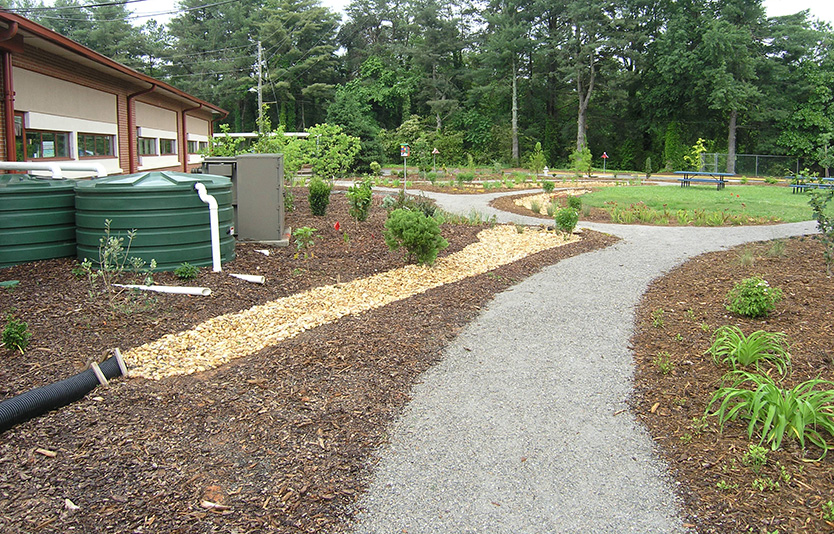
The stormwater system is simple to operate and a valuable teaching tool. The stormwater system at Smartville Garden demonstrates how rainwater falling on a garden can be collected, stored and used by the garden itself. In this view the roof water is directed into above-ground tanks. When the tanks are full, they overflow into a rock-lined swale, which slows the stormwater, encourages percolation, and leads the excess to infiltration basins.
The elaborate system of rainwater collection demonstrates conservation and engineering. Through research and expertise, we designed and built a versatile and interesting water collection system that provides maximum teaching and learning opportunities. Downspouts carry water from the roof to seven storage tanks- four below ground and three above. Their total capacity of 10,000 gallons is more than enough to supply the entire garden. No municipal water is used. Swales, primary and secondary basins, a bog, a green roof, and overflow outlets provide for surface infiltration. Complex grading was required to link all the structures in the system and, finally, to accomplish positive drainage on the campus. Underground tanks, ponds and swales required significant excavations.
This site work demanded precise location of the communications cables, electric, gas, water and sewer lines, all of which were concentrated in the footprint of the new garden. Delivering water to the irrigation system from the configuration of a variety of tanks required innovation. Pump sizes and locations were carefully selected to match calculated water delivery needs. Meticulous use of silt fence kept slippery and messy mud off the sidewalks. Roof and downspout repairs were made during the installation; roof debris was removed, and the rainwater system connections to the repaired downspouts were made. The mature plantings now conceal most of the stormwater management system, but every element can be accessed for teaching how conservation of water works.
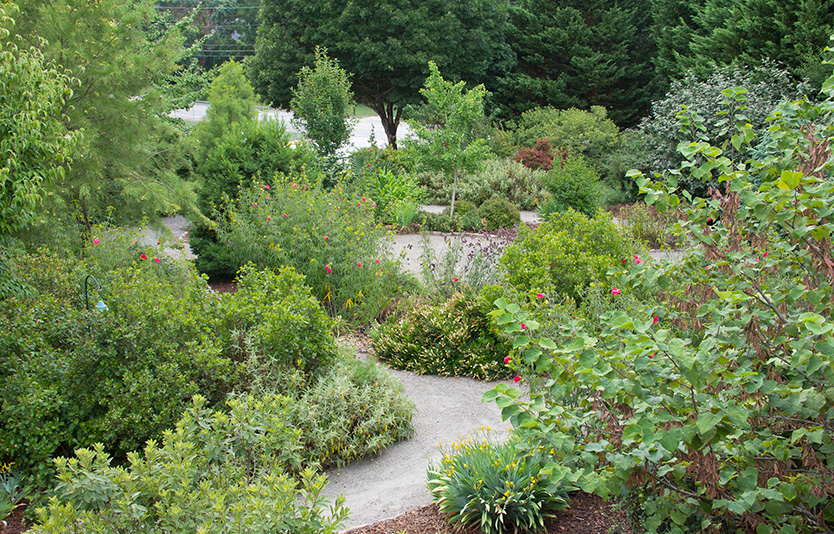
A view from above shows parts of the path system, enclosed by lush foliage, textures, and a myriad of shades of green.
Over seventy species and one thousand plants were used. Colors and textures captivate garden visitors all year long. Included are many uncommon and difficult to source plants that succeed in our climate and represent the broadest array of taxa practical.
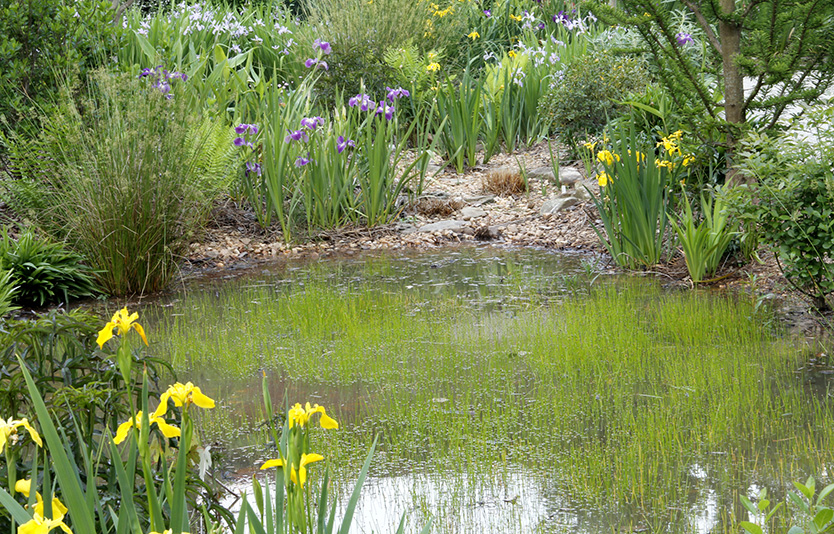
The ponds allow large volumes of water to percolate into the soil. The ponds and swales are planted with Iris, Bald Cypress, Carex, and other plants that enjoy getting their feet wet.
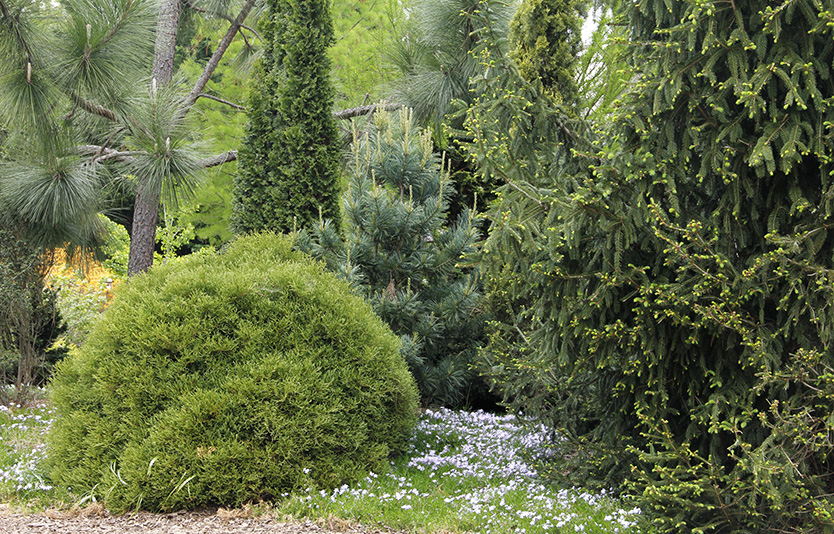
Part of the educational value of the garden is in illustrating plant taxonomy, shown in part by grouping like plants together, as we have done here with the conifers.
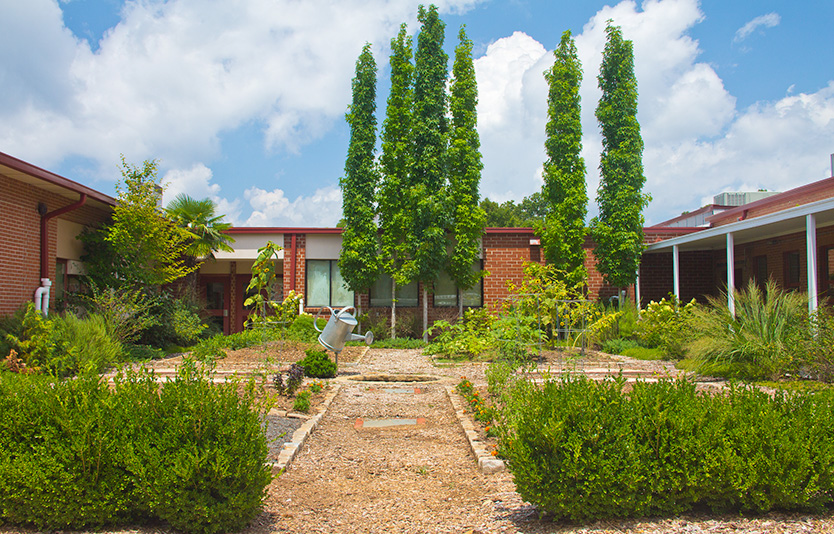
The garden also includes four large raised beds where students grow plants from seed or potted seedlings. The science teacher reports that many children learn here in this garden that food comes from plants!
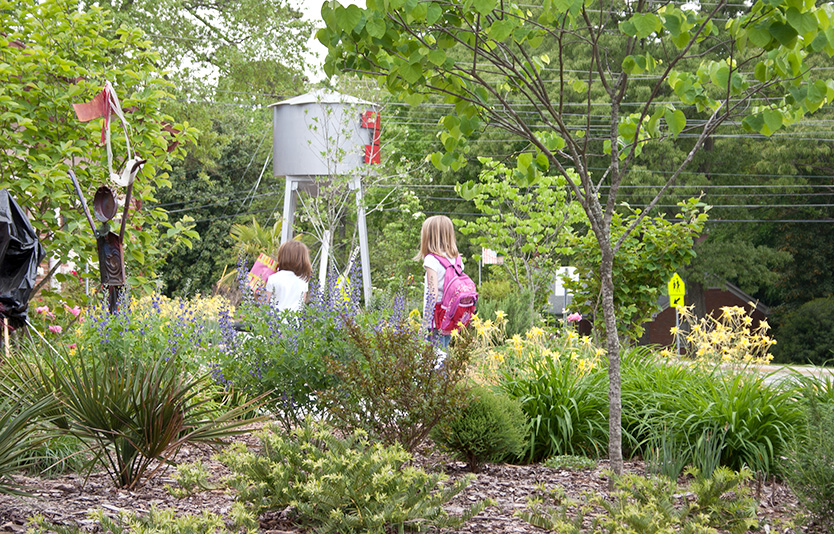
Students pass through the garden daily. Those who were on campus when the garden was being built have a unique understanding of the garden and of plant life in general. But everyone who experiences the garden today feels the proven effects of nature on educational aptitude, health and wellbeing.

About The Fockele Garden Company
Our Mission Statement says it all: Creating beauty that enriches lives
Since 1990, The Fockele Garden Company has been designing, installing and managing some of the Southeast’s most beautiful and sustainable gardens. From custom stone work, unique water features, and interesting plantings in a residential setting to complex commercial landscaping and institutional landscapes, our attention to detail through landscape design is what sets us apart.